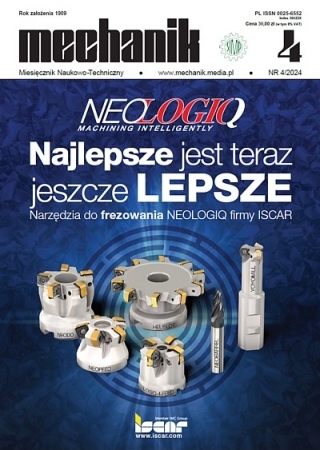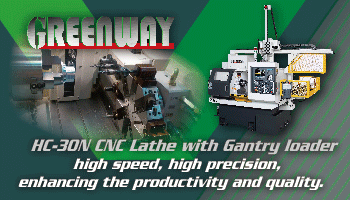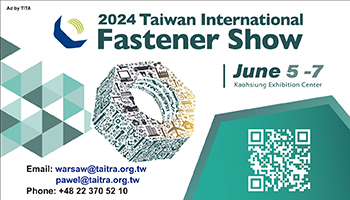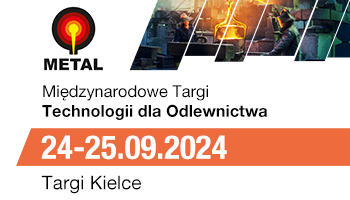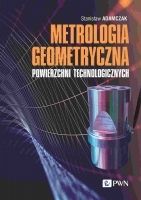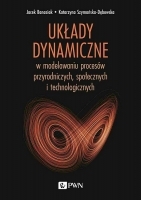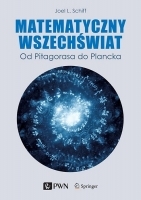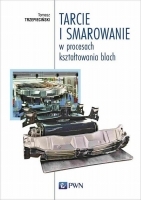New developments in cooling techniques for machining superalloys
Nowe osiągnięcia w technikach chłodzenia przy obróbce superstopów *
Mechanik nr 07/2021 - Obróbka skrawaniem
ABSTRACT: The paper presents an update of the recent literature on advances in cooling techniques for machining of difficult to machine materials such as nickel and titanium-based alloys used in aero-engine and aerostructure applications. The review covers: cryogenic machining, minimum quantity lubrication, the combination of MQL and cryogenic cooling, and high-pressure lubricoolant supply. Examples of applications in industrial processes are also given.
KEYWORDS: cooling techniques, cryogenic machining, cryogenic cooling, minimum quantity lubrication, MQL, high-pressure lubricoolant supply, difficult to machine materials, nickel alloys, titanium-based alloys
STRESZCZENIE: W artykule przedstawiono najnowsze osiągnięcia w technikach chłodzenia przy obróbce materiałów trudnoobialnych, takich jak stopy niklu i stopy tytanu, stosowanych w silnikach i konstrukcjach lotniczych. Przegląd obejmuje: chłodzenie kriogeniczne i minimalne, połączenie tych technik, czyli kriogeniczne chłodzenie minimalne, oraz chłodzenie pod wysokim ciśnieniem. Przedstawiono również przykłady zastosowań przemysłowych.
SŁOWA KLUCZOWE: chłodzenie, chłodzenie kriogeniczne, chłodzenie minimalne, chłodzenie pod wysokim ciśnieniem, materiały trudnoobrabialne, superstopy, stopy niklu, stopy tytanu
BIBLIOGRAFIA / BIBLIOGRAPHY:
[1] M’Saoubi R., Axinte R., Soo S.L., Nobel C., Attia H., Kappmeyer G., Engin S., Sim W.M. “High performance cutting of advanced aerospace alloys and composite materials”. CIRP Annals – Manufacturing Technology. 64, 2 (2015): 557–580, https://doi.org/10.1016/j.cirp.2015.05.002.
[2] Deshpande Y.V., Andhare A.B., Padole P.M. “How cryogenic techniques help in machining of nickel alloys? A review”. Machining Science and Technology. 22/4 (2018): 543–584, https://doi.org/10.1080/10910344.2017.1382512.
[3] Osman K.A., Ünver H.Ö., Şeker U. “Application of minimum quantity lubrication techniques in machining process of titanium alloy for sustainability: A review”. Int J Adv Manuf Technol. 100 (2019): 2311–2332, https://doi. org/10.1007/s00170-018-2813-0.
[4] Pervaiz S., Anwar S., Qureshi I., Ahmed N. “Recent advances in the machining of titanium alloys using minimum quantity lubrication (MQL) based techniques”. Int. J. Precis. Eng. Manuf.-Green Technol. 6 (2019): 133–145, https:// doi.org/10.1007/s40684-019-00033-4.
[5] Said Z., Gupta M., Hegab H., Arora N., Khan A.M., Jamil M., Bellos E. “A comprehensive review on minimum quantity lubrication (MQL) in machining processes using nano-cutting fluids”. Int J Adv Manuf Technol. 105 (2019): 2057– –2086, https://doi.org/10.1007/s00170-019-04382-x.
[6] Wei Fan, Wei Ji, Lihui Wang, Lianyu Zheng, Yahui Wang. “A review on cutting tool technology in machining of Ni-based superalloys”. Int J Adv Manuf Technol. 110 (2020): 2863–2879, https://doi.org/10.1007/s00170- 020-06052-9.
[7] Ross K.N.S., Manimaran G. “Effect of cryogenic coolant on machinability of difficult-to-machine Ni–Cr alloy using PVD-TiAlN coated WC tool”. Journal of the Brazilian Society of Mechanical Sciences and Engineering. 41 (2019): 44, https://doi.org/10.1007/s40430-018-1552-3.
[8] Pušavec F., Grguraš D., Koch M., Krajnik P. “Cooling capability of liquid nitrogen and carbon dioxide in cryogenic milling”. CIRP Annals – Manufacturing Technology. 68 (2019): 73–76, https://doi.org/10.1016/j.cirp.2019.03.016.
[9] Jamil M., Khan A.M., Gupta M.K., Mia M., He N., Li L., Sivalingam V. “Influence of CO2-snow and subzero MQL on thermal aspects in the machining of Ti-6Al-4V”. Applied Thermal Engineering. 177 (2020): 115480, https://doi.org/10.1016/j.applthermaleng.2020.115480.
[10] Damir A., Sadek A., Attia H. “Characterization of Machinability and Environmental Impact of Cryogenic Turning of Ti-6Al-4V”. Procedia CIRP. 69 (2018): 893–898, https:// doi.org/10.1016/j.procir.2017.11.070.
[11] Jawahir I.S., Attia H., Biermann D., Duflou J., Klocke F., Meyer D., Newman S.T., Pusavec F., Putz M., Rech J., Schulze V., Umbrello D. “Cryogenic manufacturing processes”. CIRP Annals – Manufacturing Technology. 65 (2016): 713–736, https://doi.org/10.1016/j.cirp.2016.06.007.
[12] Shah P., Khanna N., Chetan A. “Comprehensive machining analysis to establish cryogenic LN2 and LCO2 as sustainable cooling and lubrication techniques”. Tribology International. 148 (2020): 106314, https://doi.org/10.1016/j.triboint.2020.106314.
[13] Chetan A., Khanna N., Pruncu C.I., Singla A.K., Gupta M.K. “Tool wear progression and its effects on energy consumption and surface roughness in cryogenic assisted turning of Ti-6Al-4V”. Int J Adv Manuf Technol. 111 (2020): 1319– –1331, https://doi.org/10.1007/s00170-020-06140-w.
[14] Chaabani S., Arrazola P.J., Ayed Y., Madariaga A., Tidu A., Germain G. “Comparison between cryogenic coolants effect on tool wear and surface integrity in finishing turning of Inconel 718”. Journal of Materials Processing Tech. 285 (2020): 116780, https://doi.org/10.1016/j.jmatprotec.2020.116780.
[15] Sartori S., Pezzato L., Dabalà M., Enrici T.M., Mertens A., Ghiotti A., Bruschi S. “Surface Integrity Analysis of Ti6Al4V After Semi-finishing Turning Under Different Low-Temperature Cooling Strategies”. J. of Materi Eng and Perform. 27 (2018): 4810–4818, https://doi.org/10.1007/s11665- 018-3598-x.
[16] Sartori S., Taccin M., Pavese G., Ghiotti A., Bruschi S. “Wear mechanisms of uncoated and coated carbide tools when machining Ti6Al4V using LN2 and cooled N2”. Int J Adv Manuf Technol. 95 (2018): 1255–1264, https://doi. org/10.1007/s00170-017-1289-7.
[17] Kirsch B., Basten S., Hasse H., Aurich J.C. “Sub-zero cooling: A novel strategy for high performance cutting”. CIRP Annals – Manufacturing Technology. 67 (2018): 95–98, https://doi.org/10.1016/j.cirp.2018.04.060.
[18] Kumar D., Gururaja S. “Machining damage and surface integrity evaluation during milling of UD-CFRP laminates: Dry vs. cryogenic”. Composite Structures. 247 (2020): 112504, https://doi.org/10.1016/j.compstruct.2020.112504.
[19] Okafor A.C., Nwoguh T.O. “Comparative evaluation of soybean oil-based MQL flow rates and emulsion flood cooling strategy in high-speed face milling of Inconel 718”. Int J Adv Manuf Technol. 107 (2020): 3779–3793, https://doi. org/10.1007/s00170-020-05248-3.
[20] Lan Dong, Changhe Li, Xiufang Bai, Mingge Zhai, Qiang Qi, Xiaojie Lv, Lifang Li. “Analysis of the cooling performance of Ti–6Al–4V in minimum quantity lubricant milling with different nanoparticles”. Int J Adv Manuf Technol. 103 (2019): 2197–2206, https://doi.org/10.1007/s00170- 019-03466-y.
[21] Hegab H., Umer U., Soliman M., Kishawy H.A. “Effects of nano-cutting fluids on tool performance and chip morphology during machining Inconel 718”. Int J Adv Manuf Technol. 96 (2018): 3449–3458, https://doi.org/10.1007/s00170- 018-1825-0.
[22] Marques A., Suarez M.P., Sales W.F., Machado Á.R. “Turning of Inconel 718 with whisker-reinforced ceramic tools applying vegetable-based cutting fluid mixed with solid lubricants by MQL”. Journal of Materials Processing Tech. 266 (2019): 530–543, https://doi.org/10.1016/j.jmatprotec.2018.11.032.
[23] Sivalingam V., Zan Z., Sun J., Selvam B., Gupta M.K., Jamil M., Mia M. “Wear behaviour of whisker-reinforced ceramic tools in the turning of Inconel 718 assisted by an atomized spray of solid lubricants”. Tribology International. 148 (2020): 106235, https://doi.org/10.1016/j.triboint.2020.106235.
[24] Sartori S., Ghiotti A., Bruschi S. “Solid Lubricant-assisted Minimum Quantity Lubrication and Cooling strategies to improve Ti6Al4V machinability in finishing turning”. Tribology International. 118 (2018): 287–294, https://doi. org/10.1016/j.triboint.2017.10.010.
[25] Li M., Yu T., Zhang R., Li H., Wang W. “MQL milling of TC4 alloy by dispersing graphene into vegetable oil-based cutting fluid”. Int J Adv Manuf Technol. 99 (2018): 1735–1753, https://doi.org/10.1007/s00170-018-2576-7.
[26] Gong L., Bertolini R., Ghiotti A., He N., Brusch S. “Sustainable turning of Inconel 718 nickel alloy using MQL strategy based on graphene nanofluids”. Int J Adv Manuf Technol. 108 (2020): 3159–3174, https://doi.org/10.1007/ s00170-020-05626-x.
[27] Bertolini R., Gong L., Ghiotti A., Bruschi S. “Graphene Nanoplatelets-Assisted Minimum Quantity Lubrication in Turning to Enhance Inconel 718 Surface Integrity”. Procedia CIRP. 87 (2020): 71–76, https://doi.org/10.1016/j. procir.2020.02.021.
[28] Shuang Yi, John Mo, Songlin Ding. “Experimental investigation on the performance and mechanism of graphene oxide nanofluids in turning Ti-6Al-4V”. Journal of Manufacturing Processes. 43 (2019): 164–174, https://doi.org/10.1016/j. jmapro.2019.05.005.
[29] Guangxian Li, Shuang Yi, Nan Li, Wencheng Pan, Cuie Wen, Songlin Ding. “Quantitative analysis of cooling and lubricating effects of graphene oxide nanofluids in machining titanium alloy Ti6Al4V”. Journal of Materials Processing Tech. 271 (2019): 584–598, https://doi.org/10.1016/j. jmatprotec.2019.04.035.
[30] Shokrani A., Betts J. “A new hybrid minimum quantity lubrication system for machining difficult-to-cut materials”. CIRP Annals – Manufacturing Technology. 69 (2020): 73– –76, https://doi.org/10.1016/j.cirp.2020.04.027.
[31] Bartolomeis A.D., Shokrani A. “Electrohydrodynamic Atomization for Minimum Quantity Lubrication (EHDA-MQL) in End Milling Ti6Al4V Titanium Alloy”. J. Manuf. Mater. Process. 4 (2020): 70, https://doi.org/10.3390/ jmmp4030070.
[32] Shokrani A., Al-Samarrai I., Newman S.T. “Hybrid cryogenic MQL for improving tool life in machining of Ti-6Al-4V titanium alloy”. Journal of Manufacturing Processes. 43 (2019): 229–243, https://doi.org/10.1016/j.jmapro.2019.05.006.
[33] Pereira O., Celaya A., Urbikaín G., Rodríguez A., Fernández-Valdivielso A., Lacalle L.N.L. “CO2 cryogenic milling of Inconel 718: cutting forces and tool wear”. Journal of Materials Research and Technology. 9 (2020): 8459–8468, https://doi.org/10.1016/j.jmrt.2020.05.118.
[34] Yildirim C.V., Kivak T., Sarikaya M., Sirin S. “Evaluation of tool wear, surface roughness/topography and chip morphology when machining of Ni-based alloy 625 under MQL, cryogenic cooling and CryoMQL”. Journal of Materials Research and Technology. 9/2 (2020): 2079–2092, https://doi.org/10.1016/j.jmrt.2019.12.069.
[35] Damir A., Shi B., Attia M.H. “Flow characteristics of optimized hybrid cryogenic-minimum quantity lubrication cooling in machining of aerospace materials”. CIRP Annals – Manufacturing Technology. 68 (2019): 77–80, https://doi. org/10.1016/j.cirp.2019.04.047.
[36] Bagherzadeh A., Budak E. “Investigation of machinability in turning of difficult-to-cut materials using a new cryogenic cooling approach”. Tribology International. 119 (2018): 510–520, https://doi.org/10.1016/j.triboint.2017.11.033.
[37] Suhaimi Mohd Azlan, Yang Gi-Dong, Park Kyung-Hee, Hisam Mohd Juzaili, Sharif Safian, Kim Dong-Won. “Effect of Cryogenic Machining for Titanium Alloy Based on Indirect, Internal and External Spray System”. Procedia Manufacturing. 17 (2018): 158–165, https://doi.org/10.1016/j. promfg.2018.10.031.
[38] Schoop J., Sales W.F., Jawahir I.S. “High speed cryogenic finish machining of Ti-6Al4V with polycrystalline diamond tools”. Journal of Materials Processing Tech. 250 (2017): 1–8, https://doi.org/10.1016/j.jmatprotec.2017.07.002.
[39] Cica D., Kramar D. “Multi-objective optimization of high-pressure jet-assisted turning of Inconel 718”. Int J Adv Manuf Technol. 105 (2019): 4731–4745, https://doi. org/10.1007/s00170-019-04513-4.
[40] Kaynaka Y., Gharibi A., Yilmaz U., Köklü U., Aslantaş K. “A comparison of flood cooling, minimum quantity lubrication and high pressure coolant on machining and surface integrity of titanium Ti-5553 alloy”. Journal of Manufacturing Processes. 34 (2018): 503–512, https://doi. org/10.1016/j.jmapro.2018.06.003.
[41] Tascioglu E., Gharibi A., Kaynak Y. “High speed machining of near-beta titanium Ti-5553 alloy under various cooling and lubrication conditions”. Int J Adv Manuf Technol. 102 (2019): 4257–4271, https://doi.org/10.1007/s00170- 019-03291-3.
[42] Sørby K., Vagnorius Z. “High-pressure cooling in turning of Inconel 625 with ceramic cutting tools”. Procedia CIRP. 77 (2018): 74–77, https://doi.org/10.1016/j.procir.2018.08.221.
[43] Khochtali H., Ayed Y., Zemzemi F., Bensalem W. “Tool wear characteristics in rough turning of Inconel 718 with coated carbide tool under conventional and high-pressure coolant supplies”. Int J Adv Manuf Technol. 114 (2021): 2371–2386, https://doi.org/10.1007/s00170-021-07002-9.
DOI: https://doi.org/10.17814/mechanik.2021.7.9
* Artykuł recenzowany




